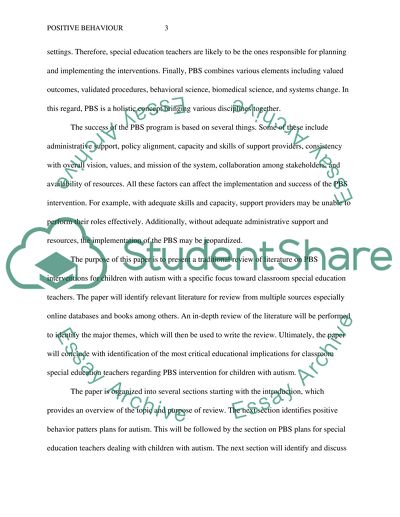Cite this document
(“Autism and Special Education Research Paper Example | Topics and Well Written Essays - 3750 words”, n.d.)
Autism and Special Education Research Paper Example | Topics and Well Written Essays - 3750 words. Retrieved from https://studentshare.org/education/1686363-positive-behavior-support-plan-for-autism-with-focus-on-special-education-teacher
Autism and Special Education Research Paper Example | Topics and Well Written Essays - 3750 words. Retrieved from https://studentshare.org/education/1686363-positive-behavior-support-plan-for-autism-with-focus-on-special-education-teacher
(Autism and Special Education Research Paper Example | Topics and Well Written Essays - 3750 Words)
Autism and Special Education Research Paper Example | Topics and Well Written Essays - 3750 Words. https://studentshare.org/education/1686363-positive-behavior-support-plan-for-autism-with-focus-on-special-education-teacher.
Autism and Special Education Research Paper Example | Topics and Well Written Essays - 3750 Words. https://studentshare.org/education/1686363-positive-behavior-support-plan-for-autism-with-focus-on-special-education-teacher.
“Autism and Special Education Research Paper Example | Topics and Well Written Essays - 3750 Words”, n.d. https://studentshare.org/education/1686363-positive-behavior-support-plan-for-autism-with-focus-on-special-education-teacher.


